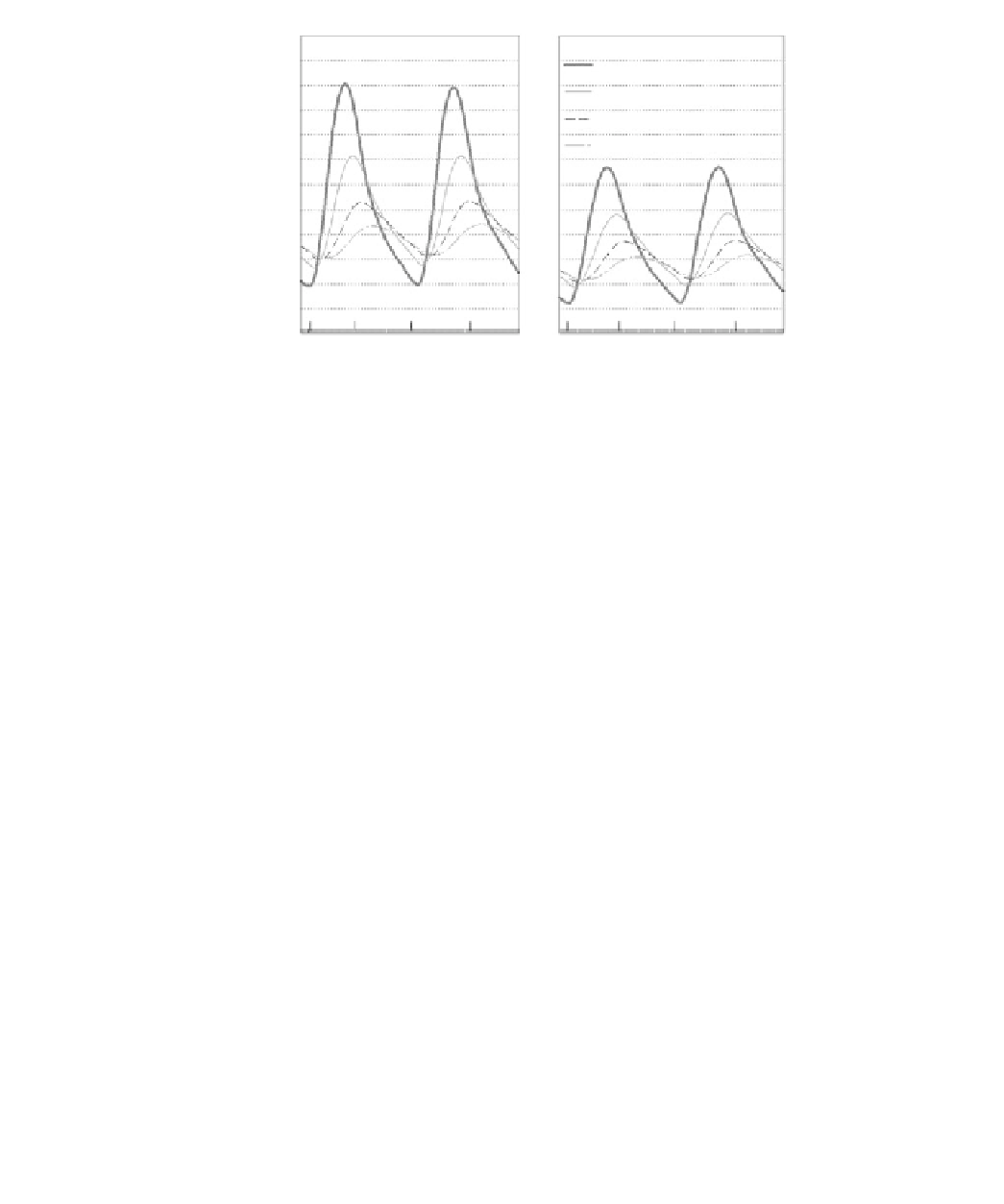Agriculture Reference
In-Depth Information
60
AD film
LDPE film
10 cm
20 cm
30 cm
40 cm
55
50
45
40
35
30
07:00 19:00
07:00
19:00
07:00 19:00
07:00
19:00
Hour
Figure 10.4
Soil temperatures at various depth during soil solarization at the summer time in Israel
using two mulches. LDPE: low-density polyethylene sheets; AD: low-density polyethylene sheets with
addition of antidrip material to the polymer.
10.8
The most common plastic fi lm used for solarization is polyethylene. The thickness of the
fi lm has no considerable effect on soil heating. The sheet is applied at thicknesses as low
as 20
Implementation and application
m with appropriate plastic material. Therefore, the farmer can consider using the
thinnest plastic (which is also the cheapest) available that is still strong enough for his
application technology. Used polyethylene sheets are also effective for SH (Avissar
et al
.,
1986), at practically no cost.
Continuous mulch is desirable for effective SH. It reduces the 'border effect' (Grinstein
et al.,
1995) and also improves control effi cacy and reduces soil reinfestation compared
to strip solarization. However, strip solarization applied to 20-cm high, 0.9-m wide beds,
increased soil temperatures and eliminated the border effect (Chellemi
et al.,
1997). This
is another example of improved technology of solarization. The optimal area for covering
a solarized plot is, of course, the whole fi eld. Such application causes yield improvement
and provides a long-term effect, thus spreading the cost of disinfestation over several
crops. The economic advantages resulting from complete coverage of the plot should be
assessed against the expenses involved.
Relatively small plots can be covered manually. The edges of the sheet should be fi rmly
embedded in the soil, while ensuring fi lm tightness. A continuous plastic covering for
relatively small plots can be achieved manually by anchoring the edge of two adjacent
sheets together in one furrow (Grinstein & Hetzroni, 1991). Mechanized plastic mulch is
essential for use in large plots. This is applied essentially as soil fumigation is performed.
The tarp layer machine unrolls plastic strips (2-4 m width), each of which is anchored to
the soil at one side and connected the other sheet by means of glue or welding. Sheet glu-
ing is most common in soil-fumigation rigs. The glue is sprayed in a 5- to 8-cm strip along
the edge of the previously laid sheet near the border of the anchored area. During the glue
spraying, a new fi lm is unrolled and one side is pressed over the top of the sprayed glue,
μ

